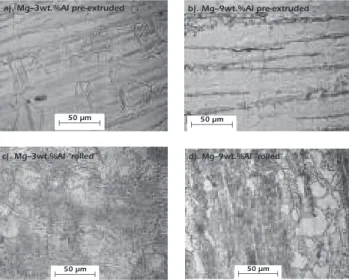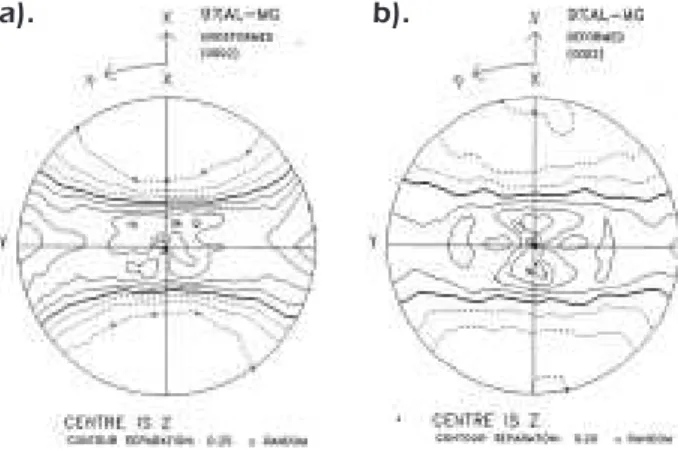Publisher’s version / Version de l'éditeur:
Vous avez des questions? Nous pouvons vous aider. Pour communiquer directement avec un auteur, consultez la
première page de la revue dans laquelle son article a été publié afin de trouver ses coordonnées. Si vous n’arrivez pas à les repérer, communiquez avec nous à PublicationsArchive-ArchivesPublications@nrc-cnrc.gc.ca.
Questions? Contact the NRC Publications Archive team at
PublicationsArchive-ArchivesPublications@nrc-cnrc.gc.ca. If you wish to email the authors directly, please see the first page of the publication for their contact information.
https://publications-cnrc.canada.ca/fra/droits
L’accès à ce site Web et l’utilisation de son contenu sont assujettis aux conditions présentées dans le site LISEZ CES CONDITIONS ATTENTIVEMENT AVANT D’UTILISER CE SITE WEB.
Experimental Reports: Materials Science and Engineering, pp. 45-47, 2007-12-31
READ THESE TERMS AND CONDITIONS CAREFULLY BEFORE USING THIS WEBSITE. https://nrc-publications.canada.ca/eng/copyright
NRC Publications Archive Record / Notice des Archives des publications du CNRC :
https://nrc-publications.canada.ca/eng/view/object/?id=de099d09-76f5-4bb0-9666-9d75b216728b https://publications-cnrc.canada.ca/fra/voir/objet/?id=de099d09-76f5-4bb0-9666-9d75b216728b
NRC Publications Archive
Archives des publications du CNRC
This publication could be one of several versions: author’s original, accepted manuscript or the publisher’s version. / La version de cette publication peut être l’une des suivantes : la version prépublication de l’auteur, la version acceptée du manuscrit ou la version de l’éditeur.
Access and use of this website and the material on it are subject to the Terms and Conditions set forth at
Study of texture evolution during channel-die compression of Mg-Al
alloys by in-situ neutron diffraction
45
Experimental Reports – Materials Science and Engineering
Study of Texture Evolution during Channel-Die Compression
of Mg-Al Alloys by In-Situ Neutron Diffraction
D.G. Sediako, M.A. Gharghouri [1]
[1] Canadian Neutron Beam Centre, National Research Council, Chalk River Laboratories, Chalk River, ON, Canada K0J 1J0
Introduction
he chemistry of alloys and the casting-rolling production routes determine the cost and properties of magnesium sheets [1]. For example, the coarse-grained structure usually associated with DC casting requires complex rolling sched-ules to reine the grain size. Added complexity comes from micro- and macro-segregation of the alloying elements, as well as from localized, such as radial or edge, stress accumu-lation. hese afect rolling productivity, and can also result in product defects, such as cracking, and inferior mechanical properties.
Rolling can result in a strong crystallographic texture, which is responsible for the tension-compression strength asym-metry exhibited by rolled magnesium alloys. he strength asymmetry is due mainly to the common {1012} twinning mechanism, which can accommodate tensile strain, but not compressive strain, parallel to the HCP c-axis. hus, the stronger the basal texture, the stronger is the tension-com-pression asymmetry.
Alloy composition inluences deformation behavior. he behavior of pure magnesium and of two binary Mg-Al alloys was investigated by neutron difraction, as aluminum is one of the most common alloying elements in Mg alloys. he simple Mg-Al system was used in order to isolate the inlu-ence of aluminum on deformation behavior, which can be strongly inluenced by other alloying additions.
Experiment
A channel-die insert compatible with the CNBC high-temperature vacuum furnace was designed and fabricated to simulate industrial rolling operation. Two binary Mg-Al alloys (3 wt.% and 9 wt.% Al) were subjected to plane strain compression with continuous monitoring of texture and lat-tice strain. For each experiment, the specimen was mounted in the furnace and load frame, heated to the target tempera-ture, and the temperature was allowed to stabilize for at least 30 minutes. A sequence of loading steps was then applied, with data collected at the end of each step, with the mate-rial in the unloaded condition. he pure Mg was deformed at 250°C, while the Mg-3%Al and Mg-9%Al alloys were deformed at 350°C.
Metallography
As shown in Figure 1(a)-(d), the Mg-3%Al alloy has a grain size of 40-75 μm, while the Mg-9%Al alloy has iner grains in the 20-40 μm range. Another clear diference between the starting structures of the alloys is the presence of twinning in the Mg-3%Al alloy; the Mg-9%Al metal is free of twinning.
he Mg-3%Al alloy underwent a slightly higher degree of deformation (1.75:1 reduction ratio) than the Mg-9%Al alloy (reduction ratio 1.5:1). his deformation resulted in grain reinement of 65% for the Mg-3%Al alloy (from an average size of 57 μm down to 20 μm), Figure 1(b). In the case of the Mg-9%Al alloy, the grain reinement was just ~ 20%, from an average of ~ 30 μm to 25 μm, Figure 1(d).
Fig. 1 Microstructural evolution of Mg-Al binary alloys:(a, c)
start-ing (pre-extruded) structure, and (b, d) resultstart-ing “rolled” structure. a). Mg–3wt.%Al pre-extruded
50 µm c). Mg–3wt.%Al “rolled” 50 µm b). Mg–9wt.%Al pre-extruded 50 µm d). Mg–9wt.%Al “rolled” 50 µm
he Mg-3%Al alloy twinned extensively during deforma-tion, which should have an efect on the crystallographic texture of the material. he 9%Al alloy does not exhibit any twinning, which can be attributed to greater mechani-cal strength of this material.
Little or no Mg17Al12 precipitates were present prior to testing for both alloys. he resulting structures, however, show numerous β-phase precipitates, which can have an inluence on texture development.
Results: Texture Evolution
In magnesium and its alloys, extrusion results in the basal poles aligning themselves normal to the extrusion axis, as shown in the (0002) pole igure for pure Mg before defor-mation (Figure 2a). Two diferent pure Mg specimens were compressed parallel and normal to the extrusion axis. he reduction ratio used was 4.8:1. he (0002) pole igure for the specimen compressed parallel to the extrusion axis is shown in Figure 2(b). he constraint from the channel die was parallel to Y, while free expansion was allowed parallel to X. he resulting (0002) pole igures for the specimens compressed normal and parallel to the extrusion axis
NRC-CNBC Annual Report 2007
46
were identical. Comparing the (0002) pole igures for the deformed and undeformed states, it is clear that the (0002) poles have rotated, such that they have become aligned with the compression/extrusion direction. he pole igure is symmetric with respect to the loading axis.
Discussion: Deformation Mechanisms
he texture evolution exhibited by the three materials can be attributed to basal slip and {1012} twinning, both of which are consistent with the observed changes in texture. Basal slip results in the basal poles aligning themselves with the compression/extrusion direction. Reorientation due to slip occurs gradually over a large strain interval, and is generally favored at higher temperatures and low strain rates. {1012} twinning results in an 86.4° reorientation of the crystal lattice, which would result in grains having an orientation represented by points at the periphery of the pole igures moving to the centre of the pole igures. Lattice reorientation due to twinning occurs abruptly, at the speed of sound, and is favored at lower temperatures and higher strain rates.
he pole igures for the materials before deformation show a weak extrusion texture, with a maximum intensity of 2-3.5×random. he maximum intensity after deformation is about 8×random for the pure Mg, about 6×random for Mg-3%Al, and only about 1.6×random for Mg-9%Al. he diferences in the deformation textures exhibited by the three materials are due to diferences in the relative amounts of basal slip and {1012} twinning, which are inluenced by strain, temperature and composition (as it pertains to solid solution and precipitation strengthening). he pure magnesium was deformed at a lower tempera-ture, and to a much higher strain, than the two binary alloys. It exhibits the strongest deformation texture, which is symmetric about the compression axis, despite the constraints imposed by the channel walls. Pure magne-sium deforms easily by basal slip and {1012} twinning at elevated temperatures. [2] Typically, lenticular twins form within a grain, and grow until the original grain is entirely consumed. For the specimen compressed parallel to the extrusion axis, most of the grains are favourably oriented for {1012} twinning; the material can thus be expected to twin completely, resulting in the observed lattice reorienta-tion. Once twinning has occurred, basal slip can take place on the reoriented basal planes. he specimen that was compressed normal to the extrusion axis (pole igure
identi-Fig. 2 (0002) pole figures for Mg (a) before and (b) after
defor-mation. The heavy solid line in the pole figure corresponds to 1xRandom; the solid lines are at the noted contour intervals up to the maximum contour marked with x’s. The dashed lines are for contours below random and the minimum contour is marked with circles. The extrusion axis is parallel to the Z-axis in the pole figure.
a). b).
a). b).
Fig. 3 (0002) pole figure for binary Mg-3% alloy (a) before and
(b) after deformation.
a). b).
Fig. 4 (0002) pole figure for Mg-9wt.% Al (a) before and (b) after
deformation.
he (0002) pole igures for Mg-3%Al before and after de-formation are shown in Figure 3. he specimen was com-pressed parallel to the extrusion axis (Z). he constraint from the channel die was parallel to Y, while free expansion was allowed parallel to X. As in the case of the pure Mg, the (0002) poles have aligned themselves with the direction of the compression and extrusion. However, unlike in the pure Mg, the texture has become asymmetric with respect to the compression axis.
he (0002) pole igures for Mg-9%Al before and after de-formation are shown in Figure 4. he specimen was com-pressed normal to the extrusion axis (Z). he extrusion axis was parallel to X, and the material was allowed to expand freely in that direction. he channel-die walls constrained expansion parallel to Y. As shown in the igures, very little texture evolution has occurred.
47
Experimental Reports – Materials Science and Engineering References
[1] F.W. Bach, M. Rodman, A. Rossberg, and M. Hepke. Magnesium Sheet Production Today And Tomorrow. Proceedings of the International Symposium on Magnesium Technology in the Global Age, Montreal, QB, 2006. 255- 268.
[2] S.E. Ion, F.J. Humphreys, S.H.White. Dynamic Recrystallization and the Development of Microstructure during the High Temperature Deforma-tion of Magnesium. Acta Metall. 1982. 30: 1909-1919
cal to Figure 4) presents an interesting case. he resulting deformation texture suggests that signiicant {1012} twin-ning has occurred likely due to the constraints imposed by the channel walls, which impose a compressive load normal to the c-axis in many grains.
he Mg-3%Al exhibits a similar deformation texture to the pure Mg, though it is weaker, due to the much lower strain imposed, and it is not symmetric about the compres-sion axis. It is likely that {1012} twinning is the dominant mechanism contributing to texture evolution. However, it appears that the constraints imposed by the channel walls, perhaps combined with the precipitation that takes place, restrict twinning in some grain orientations, resulting in the asymmetric texture
he Mg-9%Al exhibits relatively little change in texture. his can only be explained by basal slip since no twinning was observed in the metallographic structure of the sample. he presence of copious precipitation appears to inhibit twinning.

